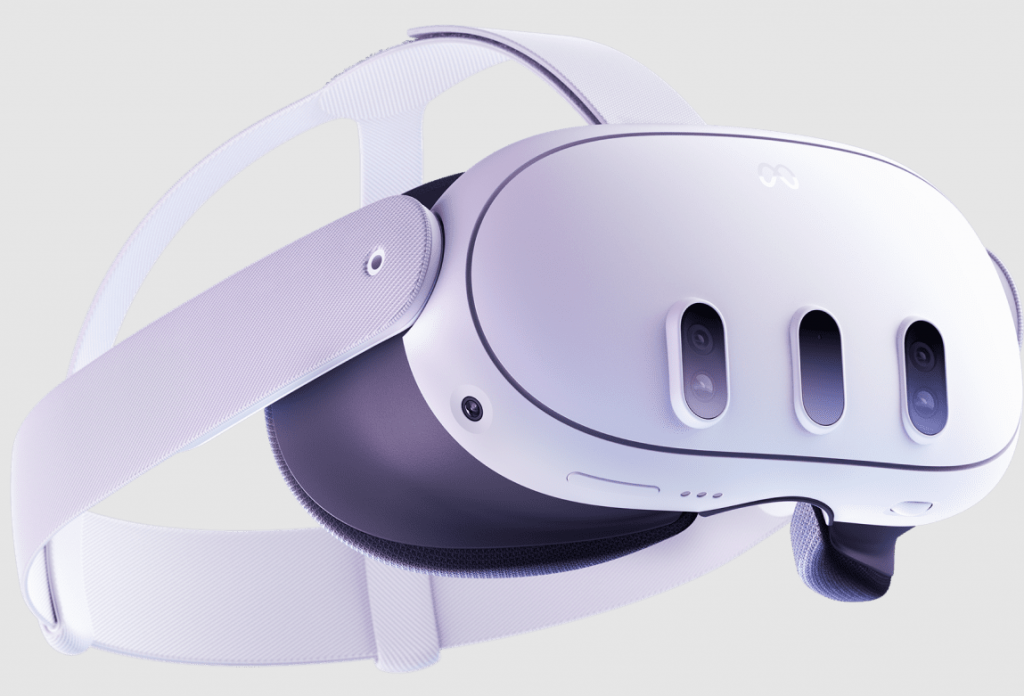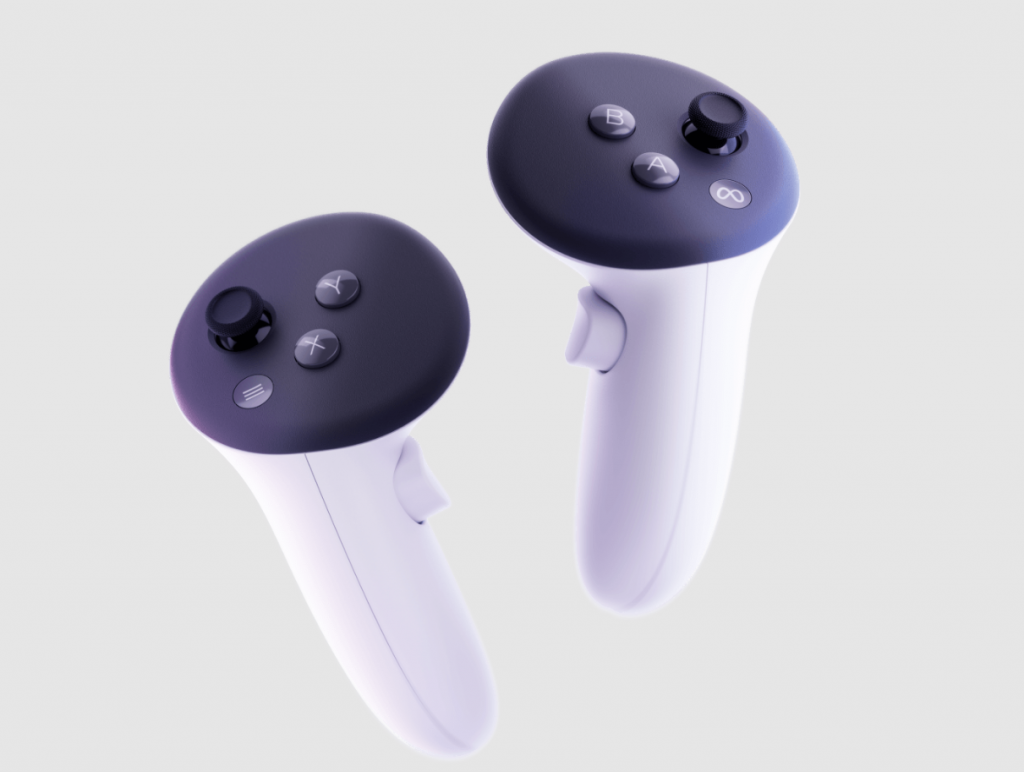The Meta Quest 3 has finally been officially announced, but with deliveries not expected until later this fall, many are left wondering if it's worth the wait when comparing it to the Quest 2.
This year, Meta's affordable VR headset lineup is garnering more attention, especially with Apple rumored to release its mixed reality headset at a price point around $3,000. In contrast, the sub-$500 price tag of the Quest 2 seems quite budget-friendly. Let's dive into the comparison between the Quest 3 and Quest 2.

Meta Quest 3 vs. Quest 2: Design
At first glance, the Quest 3 and Quest 2 appear quite related, but the new version brings some notable changes.
Both sport the same all-white aesthetic and matte plastic body. While the Quest 3 is significantly thinner (40% slimmer than the Quest 2), it retains the same basic lines as its predecessor.
The Quest 2 has four recessed areas, one at each corner, which includes trackers for positional tracking. On the top of the headset, there's a volume rocker, and on the right side, you'll find its power button. A fabric strap extends from plastic arms on either side of the Quest 2 to secure it in place, although we recommend anyone buying a Quest 2 also invest in the $59.99 Elite Strap, which significantly improves comfort and fit.
A black foam lining surrounds the part of the Quest 2 that sits close to your face. Meta now includes a silicone cover over this foam, as many users have encountered issues with this foam getting sweaty during extended VR sessions, and silicone is easier to clean.
The Quest 2 features three IPD (interpupillary distance) adjustment levels for the inner lens, crucial for achieving the best image quality, but you need to take off the headset to make this adjustment, requiring some trial and error.
The Quest 3 adds three sensors to the front of the headset, which might trigger some specific phobias, and certainly makes the overall look of the headset slightly quirky compared to the Quest 2's fairly minimalist appearance.
According to Meta, the fabric strap of the Quest 3 is more robust, but this is a claim that we'll have to experience firsthand to properly assess. Due to its much lighter weight, you might no longer need something like the Elite Strap, but we'll believe it when we try it ourselves.
Quest 3 relocates the volume controls to the bottom of the headset, a welcome change, borrowing a page from the Quest Pro playbook and adding a dial to easily find your preferred IPD setting at the bottom of the lenses. This not only gives you more options but also eliminates the need to remove the headset to make adjustments.
From a purely aesthetic perspective, Quest 2 might win out, but considering the significantly slimmer form factor and potentially lighter weight, Quest 3 gets the nod, as it could be a game-changer in this regard.

Meta Quest 3 vs. Quest 2: Ports
Both Meta Quest Pro and Quest 2 come equipped with USB-C ports for charging and data transfer.
Quest 2 has a 3.5mm headphone jack for connecting your favorite headphones, but as far as we know, Quest 3 does not.
Meta Quest 3 vs. Quest 2: Controllers
Similar to the changes in headset design, Quest 3 takes some cues from the Quest Pro and removes some of the excess from the third-generation Oculus Touch controllers of the Quest 2. The main difference is the removal of the loop at the top of the Quest 2 controllers. The rest of it remains mostly the same, with index and trigger finger triggers, capacitive thumbsticks, touchpads, and face buttons.
Internal haptics should see significant improvements, and we did find the Quest Pro controllers more comfortable than the original Quest 2 controllers, so it seems likely this will carry over to the Quest 3 controllers as well.

Meta Quest 3 vs. Quest 2: Experience
This is undoubtedly the most significant breakthrough for the Quest 3 compared to the Quest 2. The latter is a VR headset, and that's it, while the former is a mixed reality AR/VR headset. Similar to what we expect from Apple's AR/VR headset, this means it can offer applications and gaming experiences that seamlessly integrate with your real-world surroundings.
This is made possible by the new sensors on the front of the Quest 3, enabling a new full-color pass-through mode, in contrast to the Quest 2's blurry grayscale view. This will go a long way in preventing you from bumping into things and opens up a world of new possibilities for the Quest 3 in the real world.
It paves the way for productivity tasks with Quest 3, using your actual laptop while having additional virtual displays appearing alongside it to enhance your workspace.
Games will also be able to overlay on top of reality, as shown in the teaser for Quest 3, featuring a virtual tabletop gaming environment where players can roll dice and watch their actions play out on a virtual board placed on a real tabletop, thanks to the depth sensors in Quest 3.
Adding AR to the Meta Quest 3 can do a lot, making it a clear winner in this category, although it's not without its challenges. While some argue that VR's "killer app" hasn't arrived yet, it's even more true for AR at this point.
Assuming Apple enters the mixed reality market this year, there's good reason to believe it could experience explosive growth in the coming years, but we're eager to see what developers have in store for Quest 3's mixed reality content slated for release this fall.
Conclusion
It's no surprise that Quest 3 is better than Quest 2, but the question remains whether it's worth waiting for if you're in the market for a new headset and whether it's worth the extra $200 and a few months of anticipation.
The mixed reality component is the simplest differentiation, and if you find that intriguing, then waiting for Quest 3 is a must, as Quest 2 can't offer any comparison.
However, that's not the only advantage of Quest 3. The 40% reduction in size changes the game. While Quest 2 combined with the Elite Strap is sturdy and comfortable,
paired with higher-resolution lenses, a more powerful new Snapdragon chipset, and redesigned controllers with improved haptics, it's an incredibly enticing package.
So who should still go for the Quest 2? If mixed reality doesn't sound like something you'd use, and you'll primarily stick to relatively short (20-30 minute) VR sessions where the weight difference won't matter much to you, then saving $200 to invest in more VR apps and games might be the right choice.
If you're an avid Quest 2 user, it's hard to resist Quest 3, as it's an improvement in every aspect. At the very least, you can sell your Quest 2 to offset some of the costs. For most people, the wait might just be worth it.
